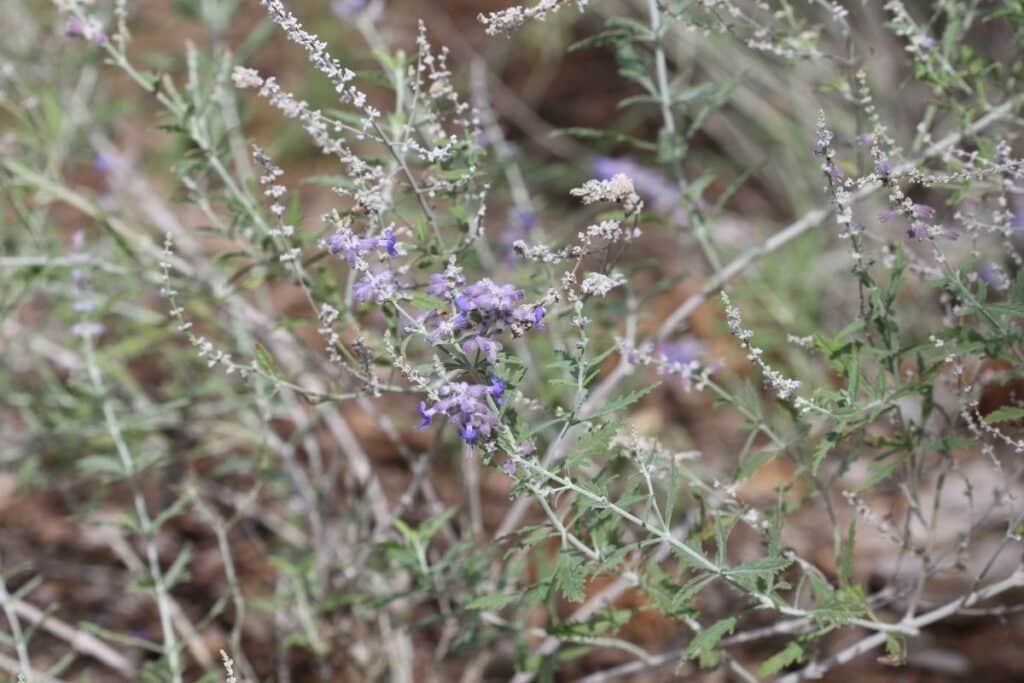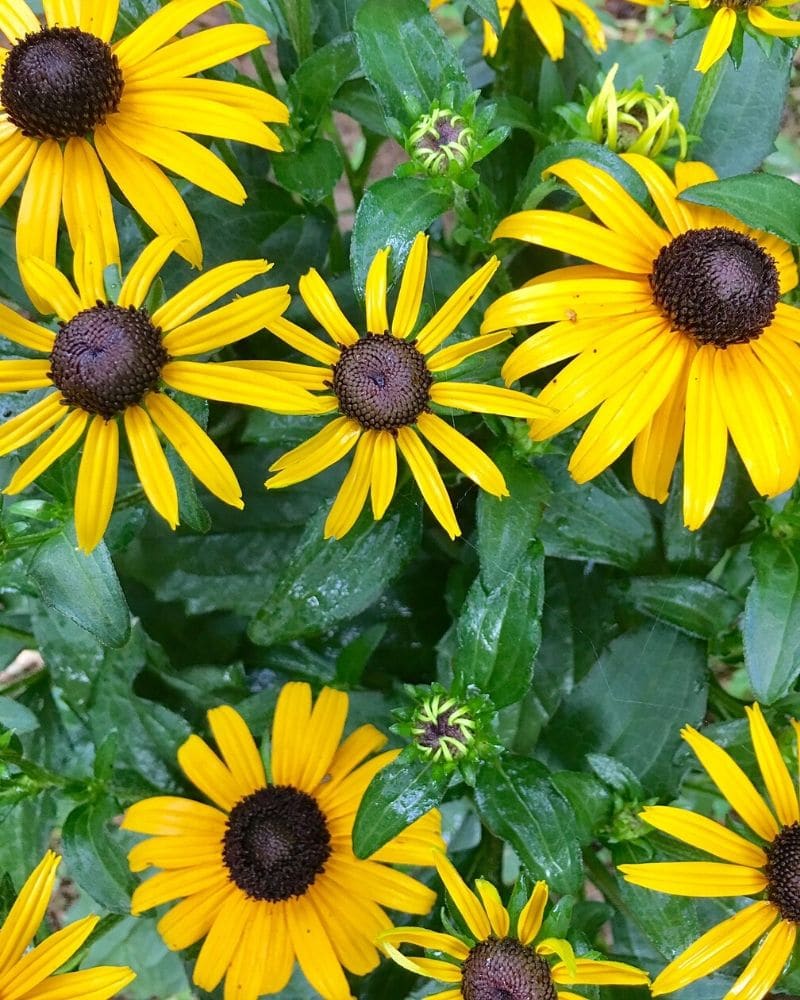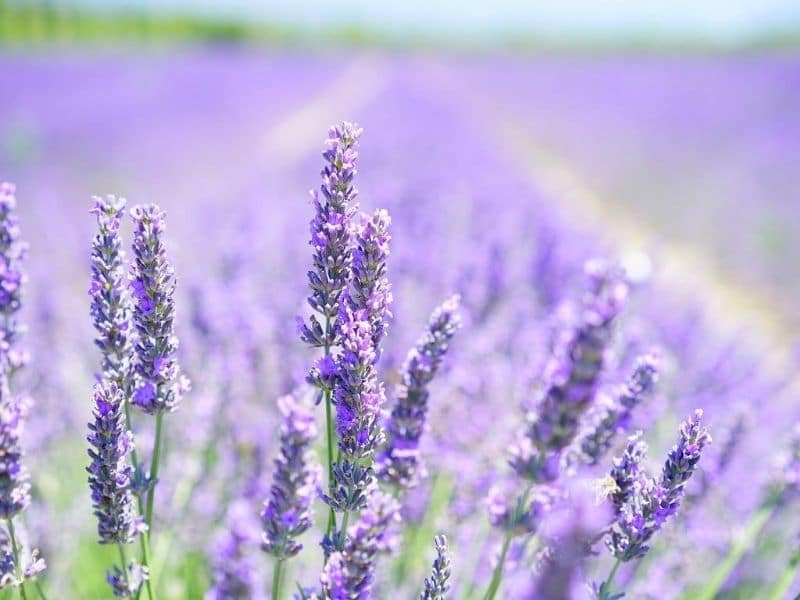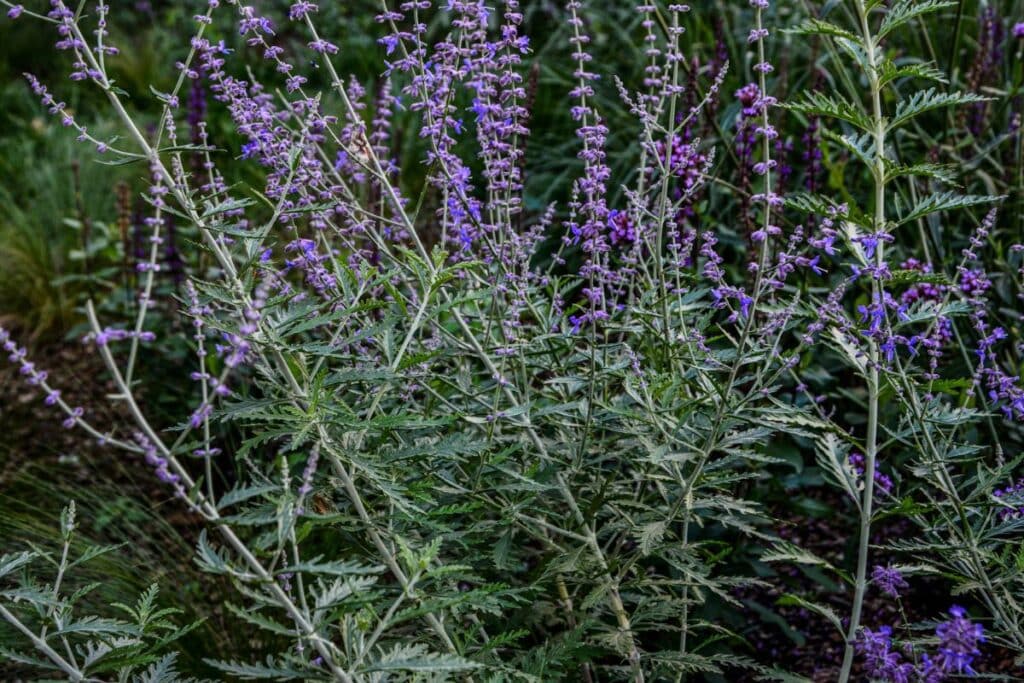Lots of gardeners love to include Russian sage (Perovskia atriplicifolia or Salvia yangii) in their gardens because this member of the mint family produces beautiful grey-green foliage and vivid purple flowers that attract plenty of pollinators to the garden.
This useful herb also acts as a pest repellent and can be used for herbal teas or medicinal purposes.
There are lots of plants that can be successfully grown alongside Russian sage.
In this guide, we are going to have a look at some of the best plants to add to a Russian sage garden if you want to enhance the aesthetics of your garden or boost the growth of your sage.
What to Plant with Russian Sage
It is always best to pair Russian sage with companion plants that have similar growing requirements. When all the plants in your garden beds have the same watering and nurturing needs, it can reduce your overall garden maintenance and ensure success for all the plants in the same garden bed.
Russian sage plant grows well in USDA zones 4 – 9 and is quite cold-tolerant but prefers warmer regions.
This perennial plant can be grown in just about any soil type including clay soil but the soil needs to drain well.
The herb requires lots of direct sunlight or it won’t produce enough flowers. And it is a relatively drought tolerant plant.

Here are some useful facts about the Russian sage:
- Botanical name – Perovskia atriplicifolia
- Height – 3 – 5 feet tall (90cm – 1.5 meters)
- Colors – Grey-green foliage and small purple flowers
- Common varieties – Blue spire, Little spire, and Blue Jean Baby
Let’s take a look at some other companion plant species that will grow well with Russian sage.
Red Hot Poker
Red hot poker plants (Kniphofia), also known as poker plants or torch lilies, are good Russian sage companion plants to consider if you are looking for a hardy perennial that is going to add lots of interest, color, and appeal to your garden.
The torch Lily has a later bloom time compared to Russian sage and its vivid red and orange flowers might not show up till after the Russian sage blooms have shed. This can be beneficial since these plants will keep your garden vibrant from late summer through autumn.
Even though they might not bloom simultaneously, the foliage of red hot pokers will add lots of charm. The spiky long leaves of these plants look a lot like ornamental grasses and will fill out the garden nicely.
Red hot pokers grow well in full sun and they can survive in most soil conditions. They are quite drought tolerant and are excellent editions to consider when you plant Russian sage.
- Botanical name – Kniphofia
- Height – 2 – 4 feet (0.6 – 1.2 meters)
- Colors – Red, orange, or lime green flowers with stalky green leaves
- Common varieties – Pineapple, Popsicle, Ice queen, and Lady luck
- Pairing Benefits – Enhances aesthetics and attracts pollinators
Black-eyed Susans

Black-eyed Susan flowers (Rudbeckia spp.) are an excellent companion plant to grow with Russian sage if you want an explosion of color and lots of contrast in your garden bed.
This flowering plant produces small yellow flowers with a contrasting dark brown center that will look very vivid amongst the purple flowers of Russian sage.
Black-eyed Susan and Russian sage can be grown well in the same garden bed because they develop quickly in well-drained soil and flourish in direct sunlight.
You can interplant these two plants together in the same garden bed to fill out blank areas amongst the Russian sage. Since black-eyed Susan plants only grow up to 3 feet tall, they won’t overpower the other plants in your garden bed and will create lots of contrast with their vivid blooms.
- Botanical name – Rudbeckia spp.
- Height – 2 – 3 feet tall (0.6 – 0.9 meters)
- Colors – Orange or yellow flowers with vibrant green foliage
- Common varieties – Indian summer and Prairie sun
- Pairing Benefits– Enhance aesthetics, attract pollinators
See more: What to plant with black-eyed Susan
Purple Coneflower
If you want to create a little healing garden then purple coneflower (Echinacea purpurea) is a terrific edition. As with Russian sage, these flowers can be used in herbal teas or for other medicinal purposes.
Growing purple coneflowers will produce lots of vivid pink flowers. There are some other varieties that produce other colors but pink is the most common. The vivid pink colors of these flowers will look terrific as they peek out amongst the lavender-blue flowers of the Russian sage.
These hardy perennials can grow well in soil with the same acidic levels as Russian sage and they flourish in well-drained soil. If the florals receive six to eight hours of direct sunlight, they will produce lots of beautiful blooms that can add lots of color and texture to your Russian sage garden bed throughout summer.
- Botanical name – Echinacea purpurea
- Height – 2 – 5 feet (60cm – 1.5m)
- Colors – Pink, purple, yellow, or green flowers with vivid green foliage
- Common varieties – Flame thrower, Greenline, and Daydream
- Pairing Benefits– Enhance aesthetics, medicinal gardening, attract beneficial insects
Phlox
Phlox plants (Phlox spp.) is a terrific floral to plant alongside Russian sage if you want to fill out the garden bed, add more color and charm, or if you need something that can act as ground covers to keep the soil moist and cool.
There are many different varieties of phlox flowers in a variety of beautiful colors that can create more contrast alongside or around your Russian sage. Some varieties of phlox like creeping phlox only grow up to 15 cm tall and are excellent for creating a garden border or can double as ground covers. Taller varieties of phlox might be more suitable for interplanting with Russian sage.
This beautiful flowering plant requires well-draining soil and can grow very well in full sun. Shorter phlox varieties also won’t be bothered too much by the shade Russian sage creates because this plant can survive in dappled sunlight.
- Botanical name – Phlox spp.
- Height – 6 inches – 5 feet (15cm – 1.5 meters)
- Colors – Pink, red, magenta, yellow, white, and blue flowers with dark green leaves
- Common varieties – Starfire, Creeping, and David Phlox
- Pairing Benefits– Enhance aesthetics, attract pollinators, ground cover
Red Salvia
Red salvias (Salvia splendens) can be an interesting option if you want to add warmer tones to your garden. As with Russian sage, this aromatic plant can also repel pests like deer and rabbits because it produces a very strong scent.
These annuals will produce lots of vivid red flowers on a tall spike when they bloom from summer to fall. The vivid reds can create a striking contrast if you add lots of purple flowering sage to the same garden bed.
Red Salvia plants grow well in USDA zones 10 – 11 and they prefer sandy soil types. The plants can, however, cope with many other sand types as long as it is planted in well-draining soil. These annuals need a little bit more watering than the drought-tolerant Russian sage but they do grow well in full sun.
Since red salvia plants are a little bit shorter, it is usually best to establish them in the front of your garden bed or in front of your sage.
- Botanical name – Salvia splendens
- Height – 1 – 2 feet (30 – 60 centimeters)
- Colors – Red
- Common varieties – Salsa Scarlet Bicolor and Ablazin Purple
- Pairing Benefits – Enhances aesthetics, repels deer and rabbits, protects sage
Lavender

Lavender (genus Lavandula) is one of the aromatic plants that pairs well with Russian sage. Both plants share similar silvery-gray foliage and thrive in well-drained, sunny locations. The visual harmony between the two is striking, as the soft, feathery appearance of Russian sage complements the more compact and aromatic nature of lavender.
Additionally, their respective flowering periods often overlap, creating a stunning display of color and texture. This pairing enhances the garden’s aesthetic appeal and attracts pollinators like bees and butterflies, contributing to a vibrant and lively ecosystem.
With similar soil and sunlight preferences, planting lavender alongside Russian sage results in a low-maintenance and cohesive garden design.
FAQs
What not to plant next to sage?
It is advisable not to plant cucumbers or members of the Brassica family (such as cabbage, broccoli, and kale) next to sage. These plants may inhibit the growth and flavor of sage, as they can be incompatible companions in the garden.
Will Russian sage spread?
Yes, Russian sage (Perovskia atriplicifolia) tends to spread, but its growth habit is more clump-forming rather than invasive. It can expand over time, sending up new shoots from the base, but it generally maintains a well-behaved growth pattern. Regular pruning in the spring can help control its size and promote a bushier, compact shape.
Is Russian sage deer resistant?
Yes, Russian sage (Perovskia atriplicifolia) is generally considered deer-resistant. The plant has a strong aroma due to its aromatic oils, and deer typically avoid plants with strong scents. While no plant can be considered entirely deer-proof, Russian sage is often less appealing to deer, making it a good choice for gardens in areas where deer browsing is a concern.
Final Thoughts
We hope that this guide was useful for selecting the best companion plants to grow with Russian sage and Denim ‘n Lace Russian Sage. We are certain that any of these combinations will help you create a very beautiful garden.
If you are adding other plants to your garden then you should have a look at some of the other guides we have on our site. With these guides, you can find all the best plant combinations to add to your native plant gardens.
See more:
*image by [email protected] and weha/depositphotos







